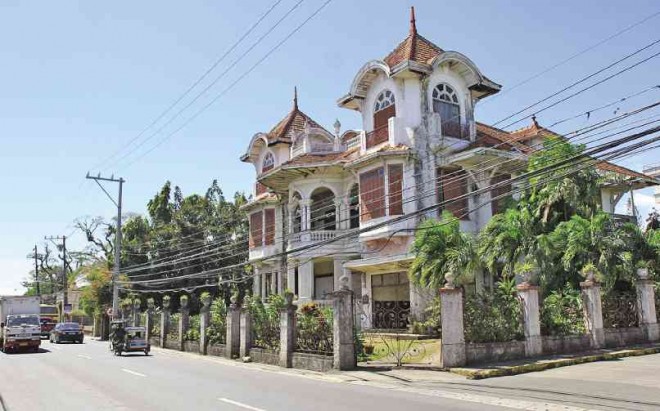SARIAYA, Quezon—The Catholic Church and heritage advocates here have stood firm on their opposition to the Department of Public Works and Highways’ (DPWH) revised plan for a road-widening project that would cut through the town center and damage church property and sections of an 88-year-old mansion.
The DPWH plan includes the demolition of the main steel gate and concrete fence of St. Francis of Assisi Church on General Luna Street, Sariaya town’s main road connected to the Maharlika Highway. It also showed that the intricately designed steel gate and concrete fence with steel grills of the iconic Enriquez-Gala mansion, which lies next to the church, would also be destroyed.
Bishop Emilio Marquez, head of the Diocese of Lucena that has jurisdiction over the Sariaya church; Rina Marquez (not related to Bishop Marquez), great granddaughter of the owner of the Enriquez-Gala mansion; and Danny de Luna, president of Sariaya Heritage Society, said these structures should be preserved.
Rina Marquez, in a phone interview from Metro Manila, said the fence and gate of the family mansion are “integral” to the property’s overall design.
She said the mansion is protected by Republic Act No. 10066 or the National Cultural Heritage Act of 2009.
The house, designed in 1927 by Andres Luna de San Pedro, son of artist-revolutionary Juan Luna, bears a marker from the National Historical Commission of the Philippines (formerly National Historical Institute).
Bishop Marquez said he would not allow any part of the gate or fence of St. Francis of Assisi Church to be destroyed. “They should respect the church premises,” he told the Inquirer in a telephone interview.
He said Public Works Secretary Rogelio Singson, in January, asked that the agency be allowed to demolish the church gate and fence. “I categorically told him (Singson) of my objection,” the bishop said.
De Luna said the road-widening project had already destroyed two heritage fences in Sariaya—the century-old Sariaya public cemetery fence, last year, and the 63-year-old fence of Lutucan Elementary School, which was demolished on Feb 19.
“We will never allow a third demolition,” he said.
De Luna said they also found that the DPWH plan would affect 10 other structures that are more than 50 years old and considered “important cultural property,” which are also protected by law.
As a way of saving the remaining historical structures in the town, heritage advocates have urged DPWH to finish two road projects that would divert motorists from the town center. These are the 24.7-kilometer Quezon-Batangas eco-tourism road and the 7.2-km Sariaya bypass road.
Nestor Cleofas, head of DPWH Quezon’s second engineering district, clarified that the revised plan for Sariaya’s main road has yet to be finalized. “[It is] only a proposal and still open to revision,” he said.
But a March 4 letter to Sariaya Mayor Rosauro Masilang showed DPWH is prepared to start the project this month. A copy of the letter was also sent to Sariaya municipal engineer Gilbert de la Roca.
In the letter, Cleofas said DPWH would notify lot owners who will be affected by the project.
The plan showed that the entire 1-km stretch of the town’s main road would no longer be widened. It also involves the construction of loading and unloading areas in three strategic spots along Sariaya’s main street.
